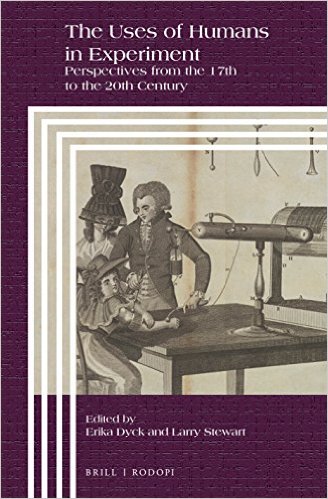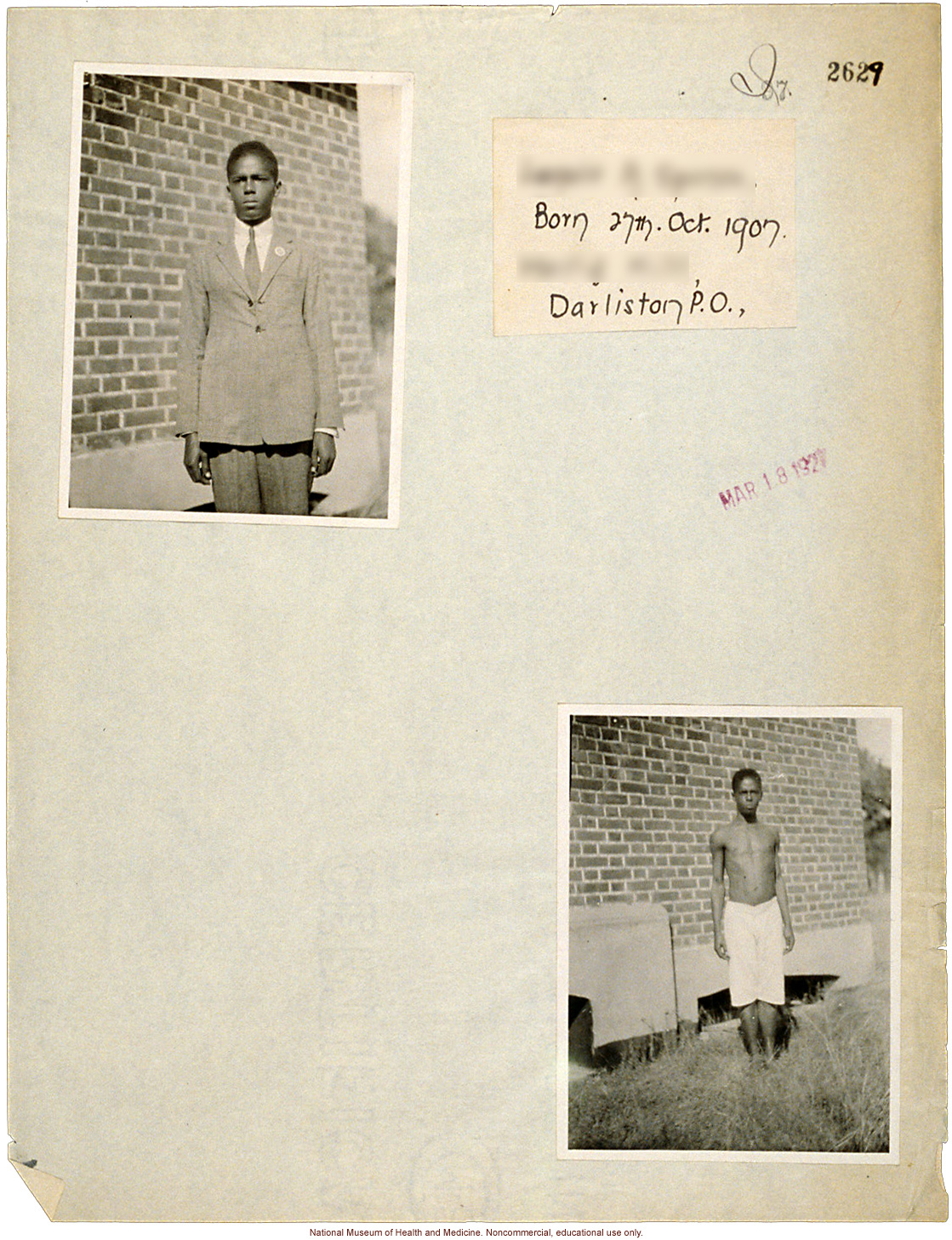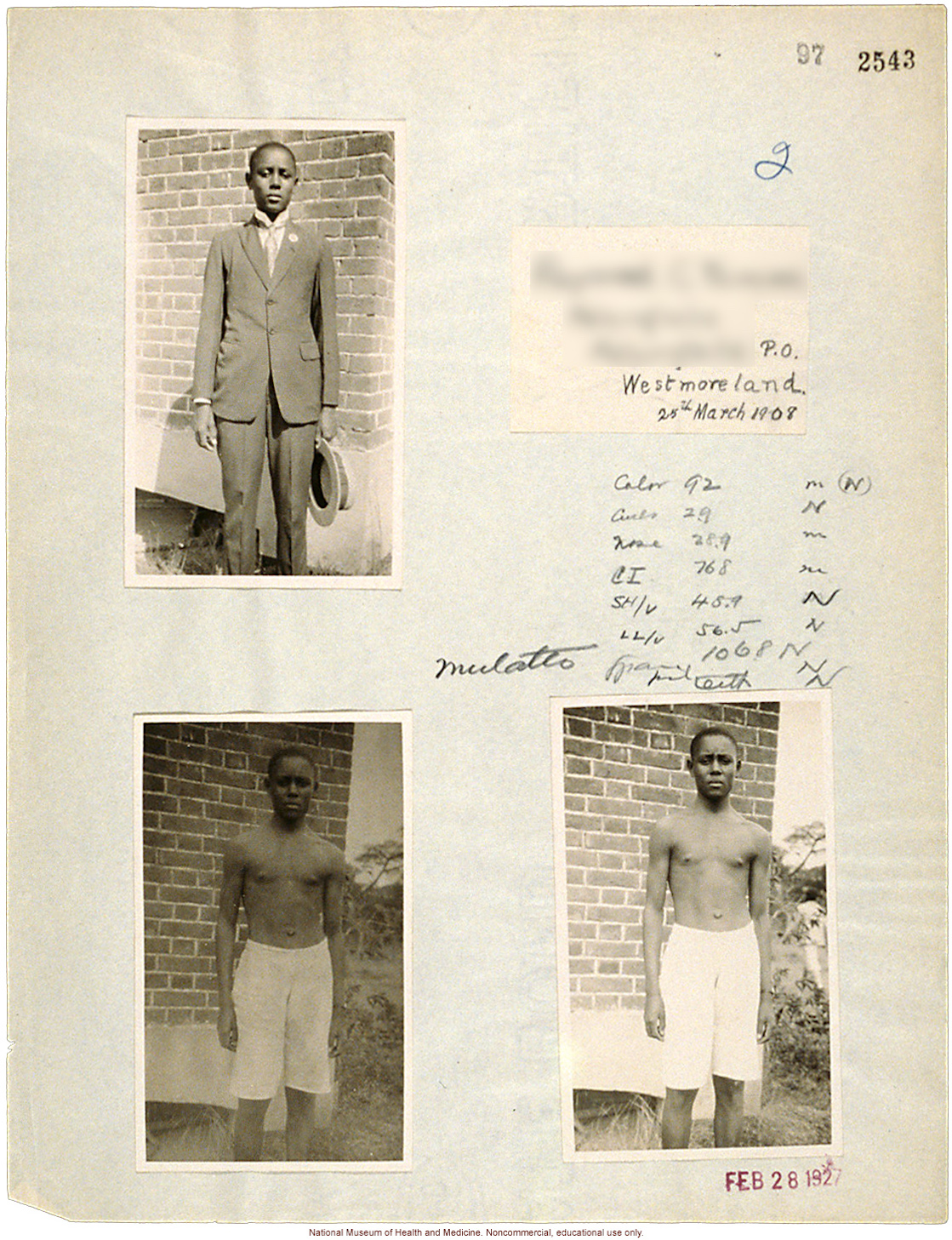From 1932 until 1944, researchers from Long Island’s Eugenic Record Office conducted detailed annual measurements of the bodies of students at Alabama’s Tuskegee Institute. The measurements were done with the tools of anthropometry, and the students participated as research subjects. Their bodies were the focal point of an experiment that was structured to generate scientific knowledge about traits thought to characterize people of the “Negro” race.

The accompanying article is taken from a chapter written by the author and appearing in “The Uses of Humans in Experiment,” edited by Erika Dyck and Larry Stewart at the University of Saskatchewan and published by Brill last month.
The study was planned by Charles Davenport, the most prominent leader of the American eugenics movement, who believed that interventions such as involuntary sterilizations were needed to improve the country’s citizenry and reduce “human degeneracy.” Davenport’s colleagues at the Eugenics Record Office helped draft laws based on those ideas that would be admired — and copied — by the Nazis in Germany.
The Tuskegee research was carried out primarily by Morris Steggerda, an Illinois-trained physical anthropologist, who worked with Davenport. The Davenport-Steggerda study fit neatly into a long-term experimental program of comparative racial research from the eugenics movement designed to support the conclusion that the “races” are separated by hereditary differences.
Planning Research at Tuskegee
For almost a generation, the Eugenics Record Office (ERO) at Cold Spring Harbor, New York provided a focal point for eugenic research in the United States. A brief contact in 1912 between ERO founder and director Charles Davenport and Booker T. Washington, founder and principal at Alabama’s Tuskegee Institution, eventually led to the eugenic anthropometric study there.
William Stokes, New York real estate mogul, part-time horse breeder and author of a book on eugenics referred Washington to Davenport so that Washington could get copy of Davenport’s highly successful text, “Heredity in Relation to Eugenics” (1911). Davenport, always alert for research opportunities, sent the book as requested. He then took the occasion to pose a series of questions to Washington about the “hereditary racial characteristics of the full blooded negro” and other topics, such as racial resistance to yellow fever, malaria, cancer, scarlet fever, diphtheria and suicide.
Washington admitted that he had “made no special study” of the issues Davenport raised. He was never a supporter of the eugenics movement, but he knew he had captured the attention of an influential scientist and their correspondence continued. Within a year Washington invited Davenport to take advantage of the “full opportunity for study among our teachers and students” and visit Tuskegee.
To Davenport, having access to the pupils of Tuskegee was an opportunity to work in a setting where he could structure an experiment to explore some of his most important ideas about race, and he could hardly have ignored an invitation to be the guest of one of the most important black men in America.
After Washington’s death in 1915, the planned study was set aside. But Davenport was not a man to let go of a valuable opportunity and he continued to work with authorities at Tuskegee to set the study in place.
Conducting the Study
Davenport planned the Tuskegee project as a longitudinal survey of a single school class through twelve years, from first grade through high school. Study sites included not only the Tuskegee Institute but also several Macon County, Alabama grade schools in the area, as well as the local Children’s Home. Tuskegee staff members assisted Steggerda, completing measurements and collecting other information, acting as liaisons to the families of the study subjects, and maintaining records between the times of Steggerda’s annual visits.
In 1929, Steggerda and Davenport had co-authored a book, “Race Crossing in Jamaica,” based on an analysis of adult agricultural workers Steggarda had done in the Caribbean country. He had divided them into three groups – black, white, and “hybrid.” The comparison led the two men to conclude that “The negro child has apparently, from birth on, different physical characteristics than the white child.” They did note that “hybrids,” though, were not always smarter than pure blacks.


Many features of Steggerda’s earlier work in Jamaica reappeared in the Tuskegee project. He completed lengthy data forms for over 200 subjects. He performed sixty-five different measurements of various body dimensions annually. They ranged from the prosaic (e.g. weight and height) to the esoteric (e.g. the depth of ear pits). Sixty-six additional observations were charted, such as the slope of the forehead and shape of the nose. Steggerda counted and evaluated student teeth, and gave tests for perception, taste sensitivity and color blindness. He also made finger and palm prints. Every child was photographed, and each gave a hair sample for analysis. Steggerda incorporated his observations into charts of eye, skin and hair color.
All of Steggerda’s studies grouped subjects by racial type in an attempt to create a standard for racial typology. Tuskegee officials sent follow-up letters to families to confirm the racial background of grandparents and other collateral relatives. In some accounts by students, racial mixture was denied, though a researcher’s notation — “Plenty of light people in the family” — might suggest otherwise. Longitudinal pedigree charts were made for all mixed-race families, consistent with earlier Eugenics Record Office studies of racial mixing, such as a Virginia study titled “Mongrel Virginians.”
Steggerda identified 100 students thought to typify “the Negro” for a publication that would focus on racial essence: The “Eugenical News.” The plan Steggerda outlined involved measuring each group of children annually as they grew in order to compile “standards … for each of these races with which children of families may be compared for genetic studies.
Steggerda summarized his impressions of racial difference after decades of study. Races are, he asserted, “innately different mentally. … Negroes as a race are given to music and excel in rhythm. They are kind, cheerful, humble and patient.” Data collection for Steggerda’s Tuskegee study ended in 1942.
In June, 1944, Science magazine announced that Steggerda’s fifteen years at the Carnegie Institution at Cold Spring Harbor would come to an end with his appointment as professor of anthropology at the Kennedy School of Missions, a division of the Hartford Seminary Foundation.
Only two years earlier, Steggerda had suffered what he characterized as a “serious illness” and “collapse.” He subsequently had a religious awakening and for the final six years of his life taught the techniques of anthropological study to missionaries in training. During that time he wrote “Meditations,” a book in which he mused about Bible verses. He discussed the story of Esau, whose marriage of two foreign women caused “bitter disappointment” to his parents. Steggerda drew this lesson from the story: “… people ought to marry those of their own kind, and of their own upbringing, their ways of thinking, their same economic level, and certainly as much as possible of their own religion.”
Steggerda reflected on the time he had spent “on the campus of one of our great Negro schools,” collecting data that would eventually be analyzed in dozens of scientific reports and papers. Despite the professional success he had experienced, his assessment of the work at Tuskegee was marked by disappointment. He described the behavior of his hosts at Tuskegee, who exhibited “a unique politeness which is almost to the point of uneasiness.” Though he praised the amenities he was afforded at the school, in his attempts to make new friends, he complained that he had “not gotten very far.”
In fact, Steggerda had experienced “… more loneliness on this American campus than I have in the mountains of Jamaica, the jungles of Mexico or the heart of the Navajo desert.” In eleven years of visits, he was invited to a total of two homes, even though he had invited fifty of his “Negro friends” to his own. None ever came. He concluded that he had failed in “breaking down the barrier between me, a sympathetic anthropologist, and Negroes whom I like to think of as my friends.”
At least when it was first conceptualized, the work of Davenport and Steggerda at Tuskegee fit within the goals of colleagues like Ales Hrdlicka and Harry Laughlin, who attempted to develop legislation that would allow for categorization of “True Americans” and a legal definition of “The American Race” for purposes of immigration restriction and marriage law — all based on a metric that would rely on racial differences that were quantifiable and considered by Davenport “quite certainly genetic.”
Steggerda was of a different generation, and looked at race with a newer lens than older members of the eugenic corps. The coarse race-baiting that characterized eugenic stalwarts like Madison Grant was not his style, nor was the more circumspect but no less noxious “scientific” posturing of his mentor Davenport. Nevertheless, he shared many of the attitudes of Davenport about the need for racial separation and the distinctions he believed inherent to the different “races.”
Yet he was unable to discern how spending a lifetime collecting data meant to bolster a system of racial separation might be met with suspicion among his subjects.
Paul Lombardo is a senior advisor to the Presidential Commission for the Study of Bioethical Issues and the Bobby Lee Cook Professor of Law at Georgia State University. He is the editor of the 2010 book, “A Century of Eugenics in America.










